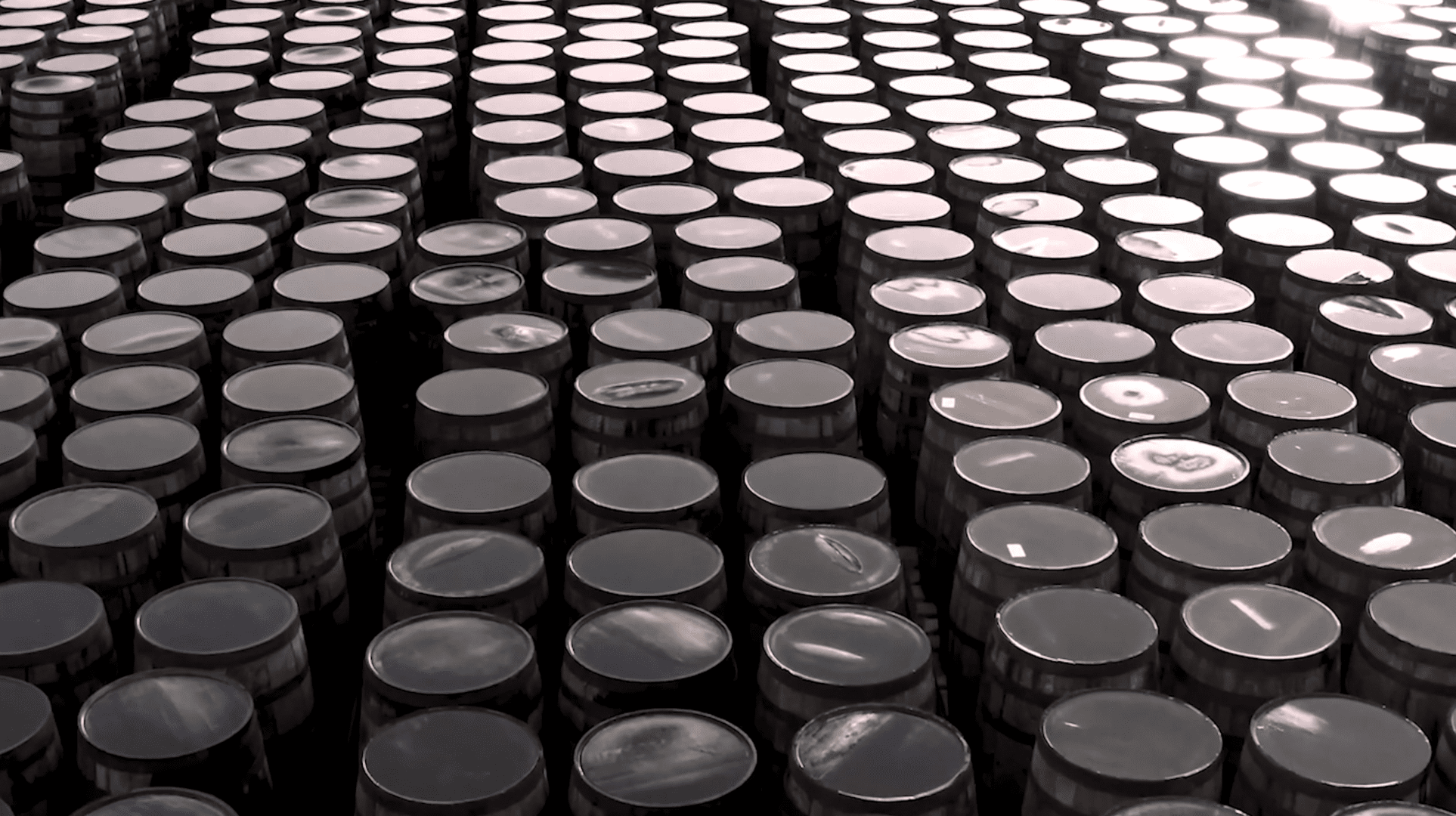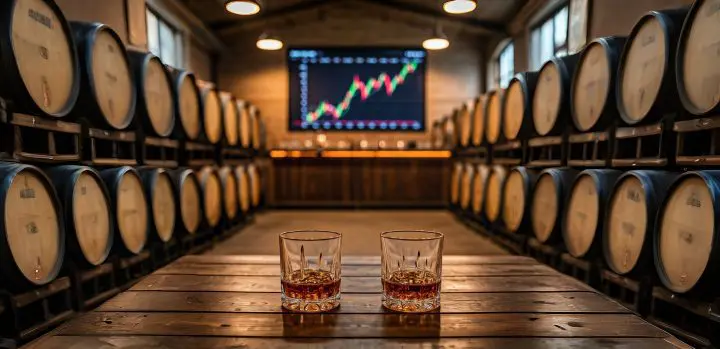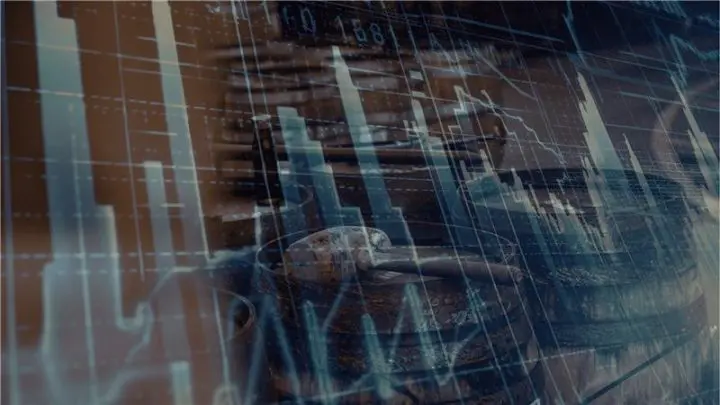
Investing In Alcohol Used To Be All About Wine, But The Rising Price Of Whiskey Is Set To Change That
If you want to explore alternative options that can provide exciting and potentially lucrative opportunities, then look no further than the world of whiskey. With the rising popularity of this beloved spirit, the price of whiskey has been soaring in recent years, making it a compelling asset option for those looking to diversify their portfolio.
Get ready to uncork a whole new world of asset possibilities. For centuries, wine has been a tried-and-true investment option, known for its ability to mature and appreciate in value over time, and as a way of diversifying your investment portfolio.
But over recent years the alternative investment market has witnessed a new star on the rise: whiskey, one of the world’s best alternative investments. Savvy investors have taken notice of the skyrocketing prices of liquid gold, and investing in alcohol such as whiskey has quickly become a popular option for those looking to diversify their portfolios. From rare bottles to cask ownership, the world of whiskey ownership is full of potential.
So, if you’re ready to sip on something a little stronger in pursuit of serious returns, read on to discover the exciting and potentially lucrative benefits of owning whiskey.
Is Whiskey A Good Investment?
Whiskey is an excellent asset option for those who are looking to diversify their portfolios. Over the last decade, the price of whiskey has soared and many experts believe that it will continue to rise in the coming years. The sale of rare and collectible whiskey bottles has also broken several records at auctions, with some bottles selling for millions of dollars. For example, in 2019, a bottle of Macallan 1926 was sold for a record-breaking $1.9 million at auction.
One reason for the increase in price is the growing popularity of whiskey around the world, and this has been influenced by several factors. The rise of craft distilleries and the increasing variety of whiskey types have made whiskey more accessible and appealing to a wider audience. Consumers are now able to choose from a range of different styles and flavours, from traditional Scottish single malts to American bourbon and Japanese whiskeys.
The cocktail renaissance has also played a significant role in boosting the popularity of whiskey. Bartenders and mixologists have rediscovered the versatility of whiskey in cocktails, creating innovative new drinks that appeal to a wider audience. This has helped to break down the perception that whiskey is a drink reserved only for connoisseurs.
And the rise of social media has made it easier for consumers to learn about whiskey and connect with like-minded enthusiasts. Whiskey clubs, forums, and online communities have formed around the world, allowing consumers to share their passion and knowledge of whiskey with others. This has helped to create a sense of community around the drink, contributing to its growing popularity. Therefore, as more people discover and enjoy whiskey, the demand for it increases, which can drive up the price.
Additionally, the production of whiskey is a time-consuming and labour-intensive process that requires a significant investment of resources, including grain, water, and barrels. As a result, the supply of whiskey is limited, which further drives up the price.
The age of whiskey also plays a significant role in its value, with older and rarer bottles fetching the highest prices. As the available supply of aged whiskey decreases, the price of these bottles increases. Taken together, these factors have contributed to the steady rise in the price of whiskey over the past decade.
Investing in whiskey is therefore a great way to get in on this market early and enjoy impressive returns on your purchases before it becomes oversaturated and more expensive to enter.
Crucially, when you invest in a cask of whiskey, for example, you become the owner of that cask, and you’re essentially buying into the ageing process of that whiskey. And unlike stocks and bonds, which can be affected by market fluctuations and economic downturns, whiskey is a tangible asset that can be stored and aged. This can make it a more stable asset, less vulnerable to market volatility. And when it’s time to sell, you can potentially realise significant returns.
What’s more, whiskey is a luxury item often associated with wealth and prestige, which adds an extra level of prestige to your portfolio.
The Best Whiskey To Invest In
There are several factors to consider when researching potential investment options, including the age, rarity, and quality of the whiskey. Generally, though, the older the whiskey, the more valuable it is. This is because, as whiskey ages in a cask, it interacts with the wood and absorbs flavours and compounds that contribute to its unique taste and aroma, making it more desirable to collectors and enthusiasts. This process is known as maturation and can take several years, with some whiskeys being aged for over 20 years.
Over time, moreover, the whiskey in the cask will continue to interact with the wood, gradually mellowing and developing new flavours and aromas. This can result in an even more complex and nuanced taste profile further enhances demand from whiskey connoisseurs.
As the whiskey ages and becomes rarer, the overall supply of whiskey decreases, and the demand for it increases, driving up its value in the market. This is particularly true for limited edition or rare whiskeys, which can often command premium prices due to their scarcity.
There are other factors to consider as well, such as the type of barrel the whiskey was aged in and the conditions in which it was stored, both of which can transform a whiskey’s future value.
For example, whiskey aged in charred oak barrels will have a different flavour profile than whiskey aged in sherry casks, potentially making that specific cask more desirable to collectors or connoisseurs. Equally, some types of barrels, such as sherry casks, may be more expensive and harder to come by than others, which can increase the value of the whiskey aged in them.
The conditions in which the whiskey was stored can also affect its value. Whiskey that’s been exposed to extreme temperatures or fluctuating humidity levels may not age as well as whiskey that’s been stored under optimal conditions. And the location of the storage facility can affect the value of the whiskey, with some regions being more desirable than others because of its impact on the quality of the whiskey. Certain regions, such as Scotland, have cooler and damper climates that are believed to be more conducive to whiskey ageing.
Meanwhile, hotter and drier regions may cause the whiskey to mature more quickly and develop different flavours. For example, whiskey aged in hot and dry climates may have a more intense and complex flavour profile, with stronger notes of spice, oak, and caramel. This can be especially desirable for connoisseurs who appreciate bold and distinctive flavours in their whiskey collections.
And since these hotter and drier regions may have limited space for ageing, or a lower number of high-quality barrels, the resulting whiskey may be rare and highly sought after, driving up its value.
The rarity of the whiskey can also play a significant role in its value, with limited edition or discontinued bottles often fetching higher prices. This comes down to to the laws of supply and demand. When a whiskey is rare, meaning that there are only a limited number of bottles available, the demand for it can be higher than the supply, which can increase its value.
Limited edition or discontinued bottles are also often highly sought after by collectors who want to add a unique or rare item to their collection. This can create a sense of exclusivity and rarity that can drive up its value. For example, a limited edition bottle of whiskey may be released to commemorate a special occasion or milestone, such as an anniversary or the launch of a new product, and may be produced in a limited quantity, making it a rare find.
And when a whiskey is discontinued, it becomes even rarer, as there will be no new bottles produced. This can create a sense of urgency among collectors who want to obtain a bottle before it becomes even harder to find, leading to an increase in demand and, subsequently, an increase in value.
Purchasing Rare Bottles
Rare whiskey investment involves purchasing rare bottles of whiskey that are highly sought after by collectors. These bottles can often sell for thousands of dollars, such as:
- Bowmore 1966, which went for $31,500 at a Bonhams auction in 2018.
- The Balvenie 50 Year Old, which sold for $52,000 at a Bonhams auction in Hong Kong in 2018.
- Springbank 1919, going for $78,000 at an auction in Edinburgh in 2019.
- The Macallan 1926 which sold for a record-breaking $1.2 million at a Christie’s auction in London in 2019.
- The Glenlivet 1943, selling for $54,000 at a Hong Kong auction in 2020.
All were produced in limited quantities and provided an excellent return.
Cask Ownership
Cask whiskey investment involves buying a cask of whiskey from a distillery via an intermediary such as Whiskey & Wealth Club and letting it mature over time, providing investors with potentially significant returns on their assets as the whiskey ages and matures.
Those who invest in whiskey in this way aere afforded the opportunity to purchase whiskey at a lower cost than buying individual bottles. This is because the cost of a cask is spread out over multiple bottles, which can result in a lower per-bottle cost. What’s more, when you buy a cask of whiskey, you not only own a physical asset – you also have the opportunity to choose when to bottle your whiskey.
In general, the longer you hold onto your whiskey investment, the greater the returns will be, and by relying on established cask ownership experts like Whiskey & Wealth Club for updates on current market trends and demand for specific types of cask whiskey, you can make more informed purchasing decisions.
As a company, we specialise in gathering information for our clients on which brands or distilleries are in high demand and the price range of casks based on their age and rarity. This information can help clients make more informed decisions on which casks to purchase and when to sell them to maximise their returns.
The Bottom Line
Owning whiskey, from rare bottles to investing in whiskey casks, is a unique and exciting way to diversify your portfolio, with whiskey investment returns offering vast potential. With the rising price of whiskey, cask ownership is quickly becoming a popular option for those looking for alternative assets. After all, when done correctly, whiskey capitalisation can be a lucrative option with the potential to provide outstanding returns.
However, it’s vital to purchase wisely through companies that pride themselves on understanding the market and providing the best possible returns for their clients. Whether you choose to purchase cask whiskey or rare bottles, whiskey is an excellent way to add some excitement and pursue lucrative returns for your asset portfolio.

